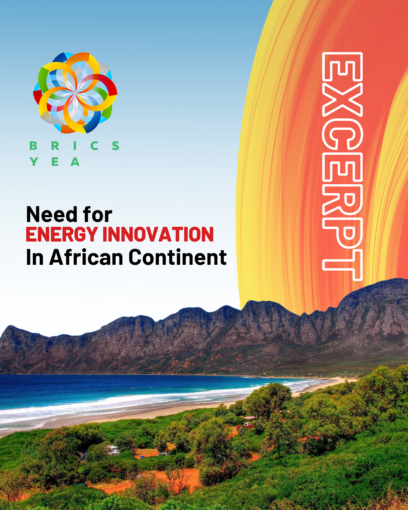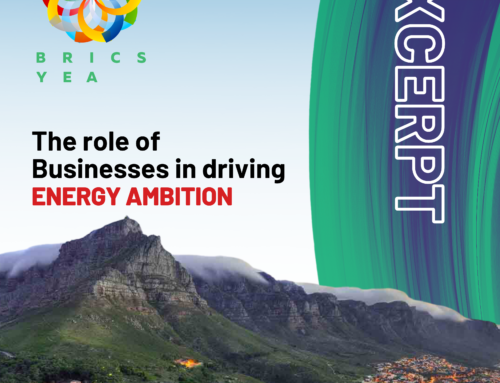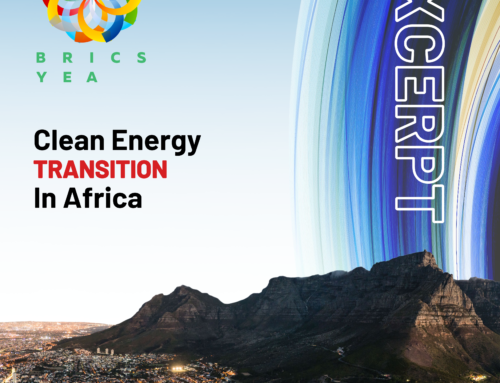The energy crisis is at the hub of one of the most luminous of all the challenges in the 21st century, affecting almost every sector and every facet of human life. Our most fundamental requirements, such as lighting, communications, and water supply, require energy today.

BRICS YEA
The healthcare sector is also significantly impacted. The medical equipment needs reliable energy sources to offer quick health services including births, vaccination, emergency surgery, diagnostic capability, prenatal and antenatal care, etc.
According to a research by the WHO, nearly 3 billion people globally rely on open fires or the basic stoves powered by traditional biomass breathing harmful compounds, as a result of which around 3.8 million people die prematurely. Looking at Africa’s position, research indicates that the smoke inhalation caused by these unclean fuels causes 1.6mn to 3mn child deaths deaths annually, and an African woman spends on a average 20 hours per week cooking while using such unclean fuel, exposing herself to health vulnerabilities, ultimately placing a substantial burden on the socio-economic conditions of the household.
During the Covid-19 pandemic, almost 100 million African women were pushed back to wood and coal, making the matter even worse. This lack of energy inhibits the problem of logistics and equipment and this situation was worsened by the Covid-19 pandemic further. Energy poverty raises concerns towards these pernicious health challenges. It has become a cross-cutting issue and need some cognizant efforts to address them.
While the African countries reaffirmed their commitment to switching to clean energy sources at COP26 and steadfastly exhibited their resolve towards clean, affordable and reliable energy. This ‘just energy’ transition is now required rather than just being a choice. This transition away from coal to sustainable energy sources like biomass will significantly foster social and economic stability. Building these climate resilient energy sources would strengthen the healthcare systems, therefore, the investment in medical technology must be complemented with the energy- access programmes.
Countries in Africa are subsidising through schemes, however the goal of universal access to energy calls for investment of USD 25 billion annually stimulating national and international action.
Even numerous organisations in Africa are continuously working to improve the region’s energy access by tying the hospitals and clinics into solar power networks as the region already possesses significant solar energy potential. In addition, the Power Africa project gave various small fundings to solar businesses for their efforts to electrify the healthcare sector and prioritising work with private sector companies in order to scale up this availability.
Africa may generate energy by exploiting the vast reserves of its renewable sources and can utilise them to generate energy in the region by using efficient fuels in the energy mix. It can also produce biogas through domestic scale biodigesters which might supply millions of local households in the region with low or zero carbon energy. To properly implement and monitor such projects, the public and private sector collaboration is very imperative with personalised level participation from youth to effectively onset and oversee such initiatives. Through its Climate Promise, the United Nations Development Program is also providing impetus to the African government from the household level to the country level.
Furthermore, in order for the transition to be carried out in line with energy needs, the manufacturing of renewable energy technologies must be localised to lessen the reliance on importing technologies which stands at over 20% of the GDP, and address the link with the ground realities. The energy access in the health sector will provide multiple solutions from logistics to ultimately achieving the improved health demographics as the end goal. Also, the financing must be improved to alleviate long standing energy services and subpar health outcomes with wiser investment in building the energy infrastructure to the fullest.
In order to achieve these transition goals, affordability must be at the centre of it. According to a study by the Liverpool University, increased access to affordable multi burner stoves can increase the use of clean energy by 58 percent by 2030. Further, around 900 million households can benefit from social and economic stability in the form of diminished health risks which will help them to increase their economic opportunities to purchase cleaner fuels.
The health and energy sector have traditionally worked in silos. Therefore, there’s a need today, to evaluate and execute all energy solutions for healthcare systems with a more nuanced awareness of the needs of the gaps that still exist. Stakeholders on the national and international levels must cooperate to build this health-energy nexus.
_________________________________
Author – Avika Bhardwaj
Team – The Geostrata





